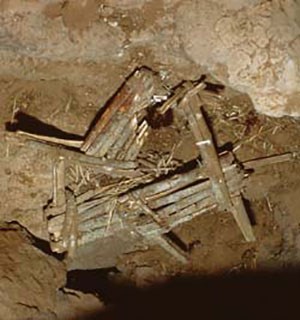Last updated: August 11, 2021
Article
The Grand Canyon and the Antiquities Act

NPS
Hailed as one of the wonders of the natural world, Arizona's Grand Canyon National Park ranks among the highest visited and may be the most famous of America's national parks. Awed by its magnificence, in 1903 President Theodore Roosevelt cautioned, “Do nothing to mar its grandeur for the ages have been at work upon it and man cannot improve it. Keep it for your children - your children's children and all who come after you…”
The Colorado River began carving this vast canyon through layers of Paleozoic rock 5 to 6 million years ago. Rainwater, melting snow, and tributaries along the length of the canyon continue to modify its shape today. The canyon's layers of diverse rocks and array of minerals cast hues of red, yellow, lavender, gray, and green onto its towering walls and expose a significant portion of the complex geological history of the North American continent. Overwhelming in size, the Grand Canyon is 277 river miles long, 18 miles wide, nearly a mile deep, and comprises more than a million acres.
Archeological sites found on the canyon rim as well as within the canyon are evidence that ancient people inhabited the Grand Canyon area some 11,000 years ago. Split-willow twigs shaped into animal figures, like those pictured above, indicate that people of another culture roamed the canyon 4,000 years ago. Ninth-century pit house settlements were traced to the Cohonina culture and apartment-style masonry structures dating to the same time period were attributed to early Puebloans. Later Puebloan people crafted stunning black-on-white and corrugated utilitarian pottery. Some believe that drought drove the early settlers away from the canyon by around 1200-1300. More recently other groups moved into the area. Today, Havasupai, Hualapai, Navajo, Hopi, and several Paiute tribes live near the canyon and celebrate their connections to this natural wonder.
Initially protected as a forest preserve in 1893 and as a game reserve in 1906, President Theodore Roosevelt declared the site a national monument in 1908 by authority of the Antiquities Act of 1906 as “an object of unusual scientific interest, being the greatest eroded canyon within the United States” (Proc. No. 794). The validity of this designation was challenged, but a U.S. Supreme Court decision in 1920 confirmed the power of the president to establish national monuments of any size under the Antiquities Act. The protected area achieved national park status in 1919 through an act of Congress signed by President Woodrow Wilson. In 1975, President Gerald Ford signed a law doubling the size of Grand Canyon National Park and establishing the current boundary.
With habitats ranging from coniferous forests on the rims to desert at the bottom of the canyon, Grand Canyon National Park hosts an amazing variety of plant and animal life. More than 1,500 species of plants, 89 varieties of mammals, 47 sorts of reptiles, and 9 species of amphibians have been recorded in the park. At least 17 kinds of fish, including the endangered humpback chub and razorback sucker, swim in the waters of the Grand Canyon. Along with 355 other types of birds, the Southwestern willow flycatcher, peregrine falcon, bald eagle, California condor, and Mexican spotted owl, all at risk of extinction, build their nests in the canyon's trees and cliffs.
About 4.5 million visitors come to the Grand Canyon annually for a myriad of activities, including, backpacking, biking, bird watching, cross-country skiing, nature walks, wildlife sighting, hiking, fishing, and viewing the sunset.
